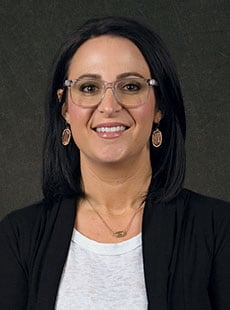 Course Introduction
Course Introduction
Core Standards of the Course
STRAND 1
Students will assess their interest and aptitudes and explore related career options based on current Career and Technical Education (CTE) Career Clusters and Pathways. (This strand will be incorporated throughout the course.)
Standard 1
Assess and apply personal interests, skills, aptitudes, and abilities to education planning and future career decisions.
-
Compare and contrast the relationship between career options, education, and training.
-
Investigate career choices in relation to aspirations and lifestyle choice (i.e. identify lifestyle goals, identify careers, salaries, and required education/training, explore how lifestyles expectations, values, and attitudes affect career decision-making.)
-
Discuss academic content knowledge related to career pathways.
-
Complete and utilize career assessments to identify career options.
-
Understand opportunities for traditional and nontraditional career choices.
-
Integrate job-seeking skills (i.e. evaluate/review a resume, complete job applications, evaluate career networks, and participate in interviews.)
Standard 2
Investigate the changing nature of the workplace.
-
Locate career outlook information (www.bls.gov, etc.)
-
Participate in a variety of Work-Based Learning experiences (i.e. guest speakers, field studies, job shadows, and career fairs.)
Standard 3
Explore the current Utah career clusters and pathways associated with each cluster and analyze the overlapping academic content and skills.
-
Agriculture, Food & Natural Resources, Architecture & Constructions, Arts, Audio/Visual Technology & Communication, Business, Finance, & Marketing, Computer Science & Information Technology, Education Training, Engineering & Technology, Health Science, Hospitality & Tourism, Human Services, Law, Public Safety, Correction & Security, Manufacturing, Transportation, Distribution & Logistics
Standard 4
Differentiate between a career cluster and career pathway.
-
Define career cluster as a group of careers and industries that are related by skills or products.
-
Define career pathway as a collection of corresponding courses that prepare students for a given career.
Standard 5
Differentiate between a CTE pathway concentrator and a CTE pathway completer and identify the benefits of both.
-
Define a CTE pathway concentrator as a student who has completed at least two courses, with at least one concentrator course, in a specific CTE pathway.
-
Define CTE pathway completer as a student who has met all requirements of a CTE pathway by completing 3.0 credits with one course being a concentrator course.
-
Examine the career cluster(s) and pathway(s) available at local high school(s) (i.e. explorer courses, concentrator courses, and completer courses) in each pathway.
Standard 6
Identify postsecondary education and training opportunities through Utah technical colleges, community colleges, universities, and industries.
-
Identify the postsecondary and industry education requirements for careers explored (i.e. apprenticeships, certifications, college degrees, etc.)
-
Discuss career choice challenges associated with stereotype, gender, and race.
STRAND 1 Performance Objectives
-
Students will participate in at least one project-based learning opportunity to explore current Utah Career Clusters. (Project-based learning is where students learn by actively engaging in real-world and personally meaningful projects.)
-
Students will participate in at least one simulation opportunity to explore current Utah Career Clusters.(Simulation is a model that mimics the operation of an existing or proposed system, providing evidence for decision-making by being able to test different scenarios or process changes.)
-
Students will participate in at least two Work-Based Learning opportunities (guest speakers, job shadows, career fairs, field studies) and provide an artifact for each experience. Artifact examples could include an oral presentation, webpage, job shadow reflection, interview, podcast, etc. (Utilize your LEA's Work-Based Learning Coordinator, if applicable, to help facilitate Work-Based Learning opportunities within the College and Career Awareness course.)
STRAND 2
Students will develop, practice, and demonstrate academic content and workplace skills within the current career clusters. (This strand will be incorporated throughout the course.)
Standard 1
Relate how developing workplace skills impacts academic and career success.
-
Discuss the benefits of strong workplace skills.
-
Discuss the negative consequences of underdeveloped workplace skills.
Standard 2
Develop personal characteristics that promote responsibility, dependability, productivity, high-quality work, and self-initiative.
-
Demonstrate regular and on-time attendance; complete tasks on-time.
-
Exhibit self-motivation and self-discipline (i.e. can work and think independently).
-
Show respect for others (i.e. time, property, opinions, etc.)
-
Be responsible for own actions.
-
Demonstrate strong work ethic (i.e. grit, determination, dedication, perseverance, etc.)
Standard 3
Explore different methods of communication.
-
Identify the different types of communication that happen within the workplace.
-
Differentiate between personal and professional communication.
-
Discuss how technology is used to communicate in the workplace (i.e. web conferencing, email, social media, networking, etc.)
-
Practice technical reading and writing (i.e. diagrams, blueprints, how-to instructions, documentation, etc.)
Standard 4
Apply critical thinking and problem-solving techniques.
-
Practice critical thinking skills (i.e. consider multiple points of view that lead to a solution to a problem).
-
Discern between relevant and credible sources.
-
Utilize a problem-solving model (i.e. engineering design process, decision matrix, pros and cons, Define, Measure, Analyze, Improve and Control (DMAIC), etc.)
-
Design unique solutions to problems.
Standard 5
Identify and demonstrate effective collaboration and teamwork skills.
-
Investigate and practice different roles within a team.
-
Discuss the positives and negatives of working in a team.
-
Demonstrate collaboration skills (i.e. brainstorming, listening, constructive feedback, etc.)
STRAND 3
Students will explore a variety of Career and Technical Student Organization (CTSOs) and the benefits of CTSO membership.
Standard 1
Students will identify and explore CTSOs.
Standard 2
Students will identify the benefits of CTSO membership.
-
Career self-efficacy
-
College aspirations
-
Community service
-
Employability skills
-
Leadership development
-
Raises students' academic motivation and engagement
Standard 3
Students will participate in a simulated CTSO category event.
-
DECA, Educators Rising, FBLA (Middle Level Competitive Events), FCCLA (Star Events), FFA (Career and Leadership Development Events), HOSA, SkillsUSA, TSA (Middle School Competitions)
STRAND 3 Performance Objectives
-
Students will participate in at least one simulated CTSO competitive event.
-
Students will reflect on the process, experience, and future impacts of participating in a CTSO.
STRAND 4
Students will create a plan of study that leads to rigorous course taking patterns and develop, practice, and demonstrate stress management, and general financial literacy skills to achieve future academic, life, and career goals. (This strand aligns to Board Rule R277-462-4 and would be appropriate for teacher/counselor collaboration.)
Standard 1
Students will participate in multiple College and Career Awareness opportunities to develop a plan of study which aligns to personal education and career interests.
-
Evaluate individual performance measures and analyze how results impact individual college and career awareness.
-
Create a rigorous program of study that promotes one, two, or four-year postsecondary opportunities.
-
Explore postsecondary admissions processes based on training and needed for future academic and career goals.
Standard 2
Students will develop stress management strategies related to reducing risk factors and enhancing factors that promote positive mental and emotional health.
-
Identify triggers and personal pressure that increase individual stress (i.e. media and technology, schoolwork, extracurricular activities, etc.)
-
Explore a variety of stress management techniques and choices that will manage and reduce individual stress.
-
Explore relevant facts about mental health and suicide, including warning signs, and where to turn for help.
Standard 3
Students will explore various financial needs and risks associated with costs of different education programs.
-
Discuss the keys terms and processes related to post-secondary education affordability, scholarships, and financial aid.
-
Explore ways to avoid student loan debt including opportunities to obtain course credits or program skills while in high school.
-
Discuss the long-term impact of student loan debt on future earning potential, self-sufficiency, and personal relationships.
STRAND 4 Performance Objectives
-
A career assessment
-
Insights and reflections (positive and negative) related to the individual process of middle/junior high school, high school, postsecondary, and career preparation aligned to individual Plan for College and Career Readiness (PCCR).


 UTAH EDUCATION NETWORK
UTAH EDUCATION NETWORK

 Justin
Justin Braxton
Braxton Dani
Dani Rob
Rob Val
Val
